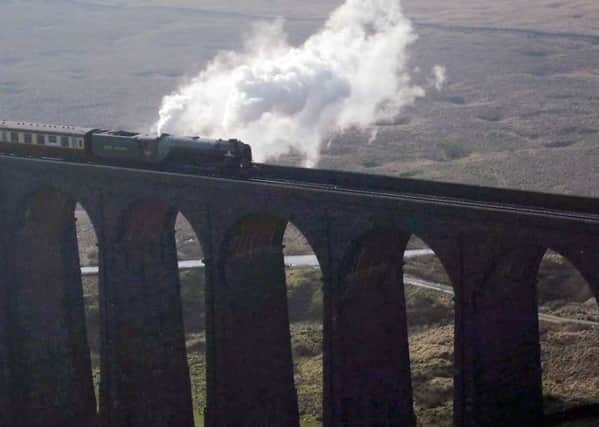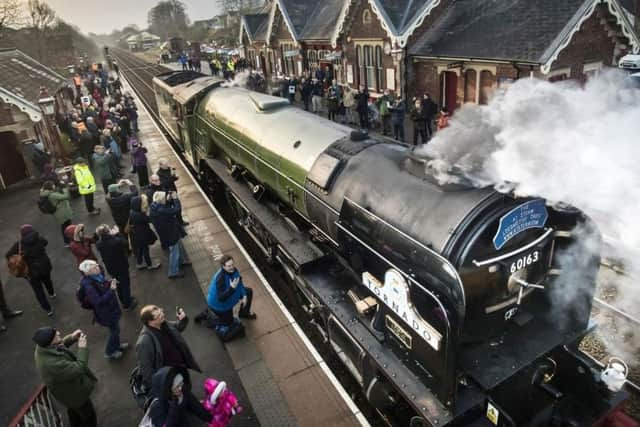Settle-Carlisle line - how it was nearly closed


For the throng of spectators and passengers standing expectantly on the platform at Appleby-in-Westmorland on Tuesday morning this week, the sight of the Tornado locomotive trundling into the station shrouded in steam was a sight to behold.
This newly-built engine was hauled into service to celebrate next month’s reopening of the complete Settle-Carlisle line, which was hit by a landslide near Armathwaite following the devastating 2015 floods.
Advertisement
Hide AdAdvertisement
Hide AdToday, the 72-mile route is widely regarded as one the world’s most scenic railways, but 28 years ago it was facing the very real threat of closure.


When it was opened in 1876 it was not only a flagship route to Scotland for Midland Railway, but also a feat of engineering brilliance. It required a 6,000-strong labour force working almost non-stop for seven years to build the line.
This included the construction of a series of tunnels as well as 13 dramatic viaducts, the longest (and most famous) of which stretched for a quarter of a mile across moorland at Ribblehead supported by 100ft-high arches.
However, by the early 1980s the line was in trouble. Passenger numbers were declining, goods traffic was nonexistent and urgent repairs would require millions of pounds of investment to keep trains running. On top of that British Rail feared the spectacular viaduct at Ribblehead was in danger of collapse.
Advertisement
Hide AdAdvertisement
Hide AdSo when the closure notice was served in 1983 the line looked like just another victim of the hard-hearted economics associated with then-Prime Minister Margaret Thatcher.


Not that train enthusiasts were going to take this lying down. The Friends of Settle-Carlisle Line (FoSCL) had been set up when rumours first emerged of plans to close the line and suddenly thousands of people rallied to the cause.
The Ribblehead Viaduct was seen as one of the great symbols of Yorkshire – the Bishop of Wakefield at the time describing it as a man-made marvel in the same league as York Minster.
More than 40,000 people signed a petition to keep the line open including a dog called Ruswarp, whose paw print was accepted seeing as owners had to pay for dogs to travel by train back then. (You can see a bronze statue of the border collie at Garsdale station in North Yorkshire).
Advertisement
Hide AdAdvertisement
Hide AdAs well as canine support, campaigners also had an unlikely ally in the shape of Michael Portillo – who was then regarded as a Tory hardliner. Portillo, now a respected railways aficionado, spent two years as Transport Minister and played a big part in persuading Mrs Thatcher to bow to public pressure and keep the station open.
But for campaigners like Pete Shaw, who was secretary of FoSCL at that time, it was a long hard slog that dragged on for six years. “It came very close to being closed,” he says. “British Rail manufactured a case for closure, they put in minimum maintenance for the line which meant it was safe to trains but not much else.”
But thanks to a high profile media campaign and offers of financial support from organisations like English Heritage, passenger numbers rose and with this so did revenue. And in 1989 the Government announced it wouldn’t be closing the line after all. “It went right up to the wire. We really thought they would approve its closure. It was a great shock, though a pleasant one, when the line was reprieved.”
Portillo later said that saving the line “was the greatest achievement of my political career”, and for campaigners like Pete Shaw, who fought tooth and nail to keep the historic line open, their hard work was vindicated.
“It’s still a route through to Scotland and it serves the local community and people travelling up and down the Dales. It’s like a big business running through the area.”